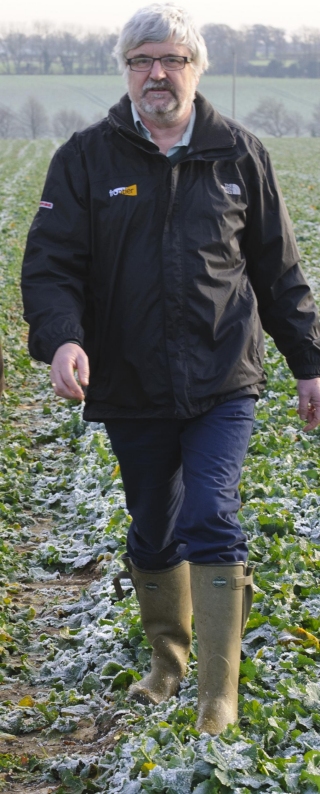 Brian Ross, an agronomist with Frontier in Suffolk, provides topical advice on managing oilseed rape during the month immediately after drilling.
Brian Ross, an agronomist with Frontier in Suffolk, provides topical advice on managing oilseed rape during the month immediately after drilling.
With many growers drilling rape into poor seedbeds this year there will be a need to manage the first 30 days or so carefully. Even more attention than usual will be required in order to get the rape in as good a condition as possible ahead of winter.
Wet soils at harvest have caused compaction in many fields and methods of establishment may have been compromised from those originally planned, in some cases. The use of non-inversion techniques on some heavier soils, where conditions are not ideal, can lead to seed placed at inconsistent depths. If these are not consolidated, a deferment of herbicide applications may be required until the crop has fully emerged. Despite this, any disadvantage is still outweighed by the benefit of non compacted soil beneath the seed. This will maximise early root growth.
Where crops have been direct drilled some open slots may remain. If left, these can hinder herbicide programmes and provide a 'motorway' for slugs.
Pest management
Slugs are likely to be a significant problem this year as their numbers throughout the season have been very high and the quantity of adults and eggs being found on stubble roots indicate an increased potential for damage. Every effort must be made to stay within the Metaldlehyde Stewardship Guidelines when using this chemistry for slug control. Remember, there are two other actives that can be used as replacements if the maximum amount of metaldehyde has been reached i.e. methiocarb and ferric phosphate.
Modesto/Cruiser treated rape should give between 6-8 weeks of cover after drilling from flea beetle and aphid damage. Follow up treatments may be necessary after this time. Vigilance will be needed to protect the crop, particularly if peach potato aphids are detected through crop monitoring as they are the vectors of Turnip Yellows Virus, a disease that is increasing year on year.
Early rape nutrition
Good early nutrition is key to getting rape away early. All Frontier seed is supplied pre-treated with 'Seedlife' seed treatment, giving the plant a head start over non treated crops, delivering quicker root stimulation and emergence.
A wet, cool September will not encourage mineralisation of nitrogen and where there is a trash problem, or excessive straw, then what nitrogen remains in the soil will be used trying to decompose these problems. As a result, the rape will not have sufficient nitrogen for its purposes.
There have been recent developments using starter fertilisers to boost early establishment. An improvement in GAI of about 0.5 by November has been seen in Frontier's Trials programme (1 unit GAI equivalent to 50kg/ha nitrogen in the plant) so this is worth considering.
The wet conditions this year will mean that an application of 30kgs/ha of nitrogen should be applied up to the end of October. Optimum timing for this is around the third week in September for rape drilled in third week August. Going too early, while the roots are very small, could mean a lower efficiency of use, though this is a general guideline.
Good management in the first few weeks will be one of the key factors to oilseed rape crop success this season. As always, growers are urged to take professional agronomy advice when making cropping decisions. To speak to a member of the Frontier technical team contact us today.









